Machine Learning Pipeline on AWS
Building End-to-End Machine Learning Pipelines on AWS
Machine learning pipelines represent the systematic approach to transforming raw data into production-ready models that deliver business value. This comprehensive guide explores the complete ML pipeline lifecycle on AWS, from problem formulation to model deployment, with practical examples and best practices for building scalable, reliable ML solutions.
The ML Pipeline Lifecycle: A Comprehensive Overview
A machine learning pipeline is a systematic workflow that transforms raw data into actionable insights through a series of interconnected stages. Each stage builds upon the previous one, creating a robust framework for developing, deploying, and maintaining ML models in production environments.
Core Pipeline Components
Data + Algorithm + Compute = Model
The fundamental equation of machine learning combines three essential elements:
- Data: The fuel that powers ML models
- Algorithm: The mathematical approach to learning patterns
- Compute: The infrastructure resources for training and inference
Business Problem Translation
Consider a common e-commerce scenario: predicting customer purchase likelihood based on browsing behavior. This business need translates into a technical ML problem through systematic decomposition.
Business Requirements:
- Predict purchase probability for website visitors
- Enable personalized marketing campaigns
- Optimize product recommendations
- Improve conversion rates
Technical Translation:
- Binary classification problem (purchase/no-purchase)
- Features: browsing time, pages viewed, cart additions, search terms
- Target metric: prediction accuracy > 85%
- Business impact: 15% increase in conversion rate
Classical Programming vs. Machine Learning Paradigms
Understanding the fundamental difference between traditional programming and ML is crucial for effective pipeline design.
Traditional Programming Approach
Input + Rules = Output
- Rules: Explicitly defined by developers
- Logic: Deterministic and predictable
- Maintenance: Manual updates required
- Scalability: Limited by rule complexity
Machine Learning Approach
Input + Output = Rules (Model)
- Rules: Automatically learned from data
- Logic: Probabilistic and adaptive
- Maintenance: Self-improving through new data
- Scalability: Improves with more data and compute
Learning Paradigms: Choosing the Right Approach
Supervised Learning: Labeled Data-Driven Models
Supervised learning forms the backbone of most business ML applications, using labeled examples to train predictive models.
Core Characteristics:
- Training data includes both input features and correct outputs
- Model learns mapping between inputs and desired outputs
- Performance measured against known correct answers
Types of Supervised Learning:
Binary Classification:
- Predicts one of two possible outcomes
- Examples: Spam detection, fraud identification, customer churn prediction
- Evaluation metrics: Accuracy, Precision, Recall, F1-Score, AUC-ROC
Multiclass Classification:
- Predicts one of multiple categorical outcomes
- Examples: Product categorization, sentiment analysis, image classification
- Evaluation metrics: Accuracy, macro/micro F1, confusion matrix
Regression:
- Predicts continuous numerical values
- Examples: Price prediction, demand forecasting, risk scoring
- Evaluation metrics: MSE, RMSE, MAE, R²
Amazon SageMaker Ground Truth for Labeling:
import boto3
# Create a labeling job
sagemaker = boto3.client('sagemaker')
response = sagemaker.create_labeling_job(
LabelingJobName='customer-churn-labeling',
LabelAttributeName='churn-label',
InputConfig={
'DataSource': {
'S3DataSource': {
'ManifestS3Uri': 's3://my-bucket/input.manifest'
}
}
},
OutputConfig={
'S3OutputPath': 's3://my-bucket/output/'
},
RoleArn='arn:aws:iam::123456789012:role/SageMakerRole',
HumanTaskConfig={
'WorkteamArn': 'arn:aws:sagemaker:us-east-1:123456789012:workteam/private-crowd/my-workteam',
'UiConfig': {
'UiTemplateS3Uri': 's3://my-bucket/ui-template.html'
},
'TaskTitle': 'Classify customer churn risk',
'TaskDescription': 'Determine if customer is likely to churn',
'NumberOfHumanWorkersPerDataObject': 3,
'TaskTimeLimitInSeconds': 300,
'TaskAvailabilityLifetimeInSeconds': 864000
}
)
Unsupervised Learning: Pattern Discovery
Unsupervised learning uncovers hidden structures in data without labeled examples.
Key Applications:
- Customer segmentation and clustering
- Anomaly detection
- Dimensionality reduction
- Topic modeling
Popular Algorithms:
- K-Means clustering
- Principal Component Analysis (PCA)
- Autoencoders
- Gaussian Mixture Models
Reinforcement Learning: Decision-Making Systems
Reinforcement learning trains agents to make sequential decisions through trial-and-error.
Core Components:
- Agent: Decision-making entity
- Environment: System the agent interacts with
- Actions: Possible decisions the agent can make
- Rewards: Feedback signals for good/bad decisions
- Policy: Strategy for choosing actions
Applications:
- Game playing (AlphaGo, Dota 2)
- Robotics and autonomous systems
- Recommendation systems
- Resource optimization
Deep Learning: Neural Network Revolution
Deep learning represents a subset of machine learning that uses artificial neural networks with multiple layers to learn complex patterns.
Neural Network Architecture
Basic Neuron Structure:
Input → Weights → Activation Function → Output
Deep Network Characteristics:
- Multiple hidden layers between input and output
- Non-linear activation functions (ReLU, sigmoid, tanh)
- Backpropagation for weight optimization
- Gradient descent for parameter updates
Deep Learning Advantages
Feature Learning:
- Automatically extracts hierarchical features
- No manual feature engineering required
- Learns from raw data (images, text, audio)
Scalability:
- Performance improves with more data
- Parallel processing on GPUs/TPUs
- Handles high-dimensional data effectively
Popular Deep Learning Frameworks
TensorFlow:
import tensorflow as tf
# Define a simple neural network
model = tf.keras.Sequential([
tf.keras.layers.Dense(128, activation='relu', input_shape=(784,)),
tf.keras.layers.Dropout(0.2),
tf.keras.layers.Dense(10, activation='softmax')
])
# Compile and train
model.compile(optimizer='adam',
loss='sparse_categorical_crossentropy',
metrics=['accuracy'])
model.fit(x_train, y_train, epochs=5)
PyTorch:
import torch
import torch.nn as nn
class SimpleNN(nn.Module):
def __init__(self):
super(SimpleNN, self).__init__()
self.fc1 = nn.Linear(784, 128)
self.fc2 = nn.Linear(128, 10)
self.dropout = nn.Dropout(0.2)
def forward(self, x):
x = torch.relu(self.fc1(x))
x = self.dropout(x)
x = self.fc2(x)
return x
model = SimpleNN()
criterion = nn.CrossEntropyLoss()
optimizer = torch.optim.Adam(model.parameters())
ML Pipeline Stages: From Concept to Production
Stage 1: Problem Formulation
Business Problem Definition:
- What business outcome are we trying to achieve?
- What is the measurable impact of success?
- What are the constraints and requirements?
Technical Problem Translation:
- What type of ML problem is this?
- What data do we need?
- What performance metrics matter?
Success Criteria Definition:
Model Performance Metrics:
- Accuracy: Overall correctness of predictions
- Precision: True positives / (True positives + False positives)
- Recall: True positives / (True positives + False negatives)
- F1-Score: Harmonic mean of precision and recall
- AUC-ROC: Area under the receiver operating characteristic curve
Business Impact Metrics:
- Revenue increase from better predictions
- Cost reduction from optimized operations
- Customer satisfaction improvements
- Operational efficiency gains
Stage 2: Data Collection and Integration
Data Sources:
- Internal databases and data warehouses
- External APIs and third-party data
- Streaming data from IoT devices
- User-generated content and logs
AWS Data Ingestion Services:
Amazon S3 for Data Lake:
import boto3
# Upload data to S3
s3 = boto3.client('s3')
s3.upload_file('local_data.csv', 'my-data-lake', 'raw/customer_data.csv')
AWS Glue for ETL:
import boto3
from pyspark.sql import SparkSession
glue = boto3.client('glue')
# Create ETL job
response = glue.create_job(
Name='customer-data-etl',
Role='arn:aws:iam::123456789012:role/GlueRole',
Command={
'Name': 'glueetl',
'ScriptLocation': 's3://my-scripts/etl_script.py'
},
DefaultArguments={
'--job-bookmark-option': 'job-bookmark-enable'
}
)
Stage 3: Data Preprocessing and Exploration
Data Quality Assessment:
- Missing value analysis
- Outlier detection
- Data type validation
- Statistical distribution checks
Essential Python Libraries:
Pandas for Data Manipulation:
import pandas as pd
# Load and explore data
df = pd.read_csv('customer_data.csv')
# Basic exploration
print(df.head())
print(df.describe())
print(df.isnull().sum())
# Handle missing values
df['age'].fillna(df['age'].median(), inplace=True)
df['income'].fillna(df['income'].mean(), inplace=True)
NumPy for Numerical Operations:
import numpy as np
# Array operations
data = np.array([[1, 2, 3], [4, 5, 6]])
normalized = (data - np.min(data)) / (np.max(data) - np.min(data))
Data Visualization:
import matplotlib.pyplot as plt
import seaborn as sns
# Distribution plots
plt.figure(figsize=(10, 6))
sns.histplot(df['age'], bins=30)
plt.title('Age Distribution')
plt.show()
# Correlation heatmap
plt.figure(figsize=(12, 8))
sns.heatmap(df.corr(), annot=True, cmap='coolwarm')
plt.title('Feature Correlations')
plt.show()
Outlier Detection Techniques:
Statistical Methods:
# Z-score method
from scipy import stats
z_scores = stats.zscore(df['income'])
outliers = df[abs(z_scores) > 3]
# IQR method
Q1 = df['income'].quantile(0.25)
Q3 = df['income'].quantile(0.75)
IQR = Q3 - Q1
outliers = df[(df['income'] < Q1 - 1.5 * IQR) | (df['income'] > Q3 + 1.5 * IQR)]
Machine Learning Methods:
from sklearn.ensemble import IsolationForest
# Isolation Forest for outlier detection
iso_forest = IsolationForest(contamination=0.1, random_state=42)
outliers = iso_forest.fit_predict(df[['age', 'income']])
outlier_data = df[outliers == -1]
Stage 4: Feature Engineering
Feature Selection:
- Remove irrelevant or redundant features
- Identify most predictive variables
- Reduce dimensionality and computational cost
Feature Extraction:
- Create new features from existing data
- Domain knowledge application
- Automated feature generation
Feature Transformation:
- Normalization and scaling
- Encoding categorical variables
- Handling skewed distributions
Scaling Techniques:
Min-Max Scaling:
from sklearn.preprocessing import MinMaxScaler
scaler = MinMaxScaler()
scaled_features = scaler.fit_transform(df[['age', 'income']])
Standardization:
from sklearn.preprocessing import StandardScaler
scaler = StandardScaler()
standardized_features = scaler.fit_transform(df[['age', 'income']])
Categorical Encoding:
One-Hot Encoding:
from sklearn.preprocessing import OneHotEncoder
encoder = OneHotEncoder(sparse=False)
encoded_features = encoder.fit_transform(df[['category']])
Label Encoding:
from sklearn.preprocessing import LabelEncoder
encoder = LabelEncoder()
encoded_labels = encoder.fit_transform(df['target'])
Stage 5: Model Training and Evaluation
Model Selection Framework:
- Start with simple models (baseline)
- Progress to complex models
- Compare performance across algorithms
- Consider computational constraints
Training Best Practices:
Data Splitting:
from sklearn.model_selection import train_test_split
X_train, X_test, y_train, y_test = train_test_split(
X, y, test_size=0.2, random_state=42, stratify=y
)
X_train, X_val, y_train, y_val = train_test_split(
X_train, y_train, test_size=0.2, random_state=42, stratify=y_train
)
Cross-Validation:
from sklearn.model_selection import cross_val_score
from sklearn.ensemble import RandomForestClassifier
model = RandomForestClassifier(random_state=42)
scores = cross_val_score(model, X_train, y_train, cv=5, scoring='accuracy')
print(f"Cross-validation accuracy: {scores.mean():.3f} (+/- {scores.std() * 2:.3f})")
Overfitting vs. Underfitting:
Bias-Variance Tradeoff:
- High Bias (Underfitting): Model too simple, misses patterns
- High Variance (Overfitting): Model too complex, memorizes noise
- Balanced Model: Optimal complexity for generalization
Regularization Techniques:
from sklearn.linear_model import LogisticRegression
# L1 regularization (Lasso)
model_l1 = LogisticRegression(penalty='l1', C=0.1, solver='liblinear')
# L2 regularization (Ridge)
model_l2 = LogisticRegression(penalty='l2', C=0.1)
# Elastic Net (combination)
model_en = LogisticRegression(penalty='elasticnet', C=0.1, l1_ratio=0.5, solver='saga')
Evaluation Metrics Deep Dive:
Confusion Matrix Analysis:
from sklearn.metrics import confusion_matrix, classification_report
y_pred = model.predict(X_test)
cm = confusion_matrix(y_test, y_pred)
print("Confusion Matrix:")
print(cm)
print("\nClassification Report:")
print(classification_report(y_test, y_pred))
ROC Curve and AUC:
from sklearn.metrics import roc_curve, auc
import matplotlib.pyplot as plt
# Get prediction probabilities
y_prob = model.predict_proba(X_test)[:, 1]
# Calculate ROC curve
fpr, tpr, thresholds = roc_curve(y_test, y_prob)
roc_auc = auc(fpr, tpr)
# Plot ROC curve
plt.figure(figsize=(8, 6))
plt.plot(fpr, tpr, color='darkorange', lw=2, label=f'ROC curve (AUC = {roc_auc:.2f})')
plt.plot([0, 1], [0, 1], color='navy', lw=2, linestyle='--')
plt.xlabel('False Positive Rate')
plt.ylabel('True Positive Rate')
plt.title('Receiver Operating Characteristic (ROC) Curve')
plt.legend(loc="lower right")
plt.show()
Stage 6: Hyperparameter Tuning
Grid Search:
from sklearn.model_selection import GridSearchCV
param_grid = {
'n_estimators': [100, 200, 300],
'max_depth': [10, 20, None],
'min_samples_split': [2, 5, 10]
}
grid_search = GridSearchCV(
RandomForestClassifier(random_state=42),
param_grid,
cv=5,
scoring='accuracy',
n_jobs=-1
)
grid_search.fit(X_train, y_train)
print(f"Best parameters: {grid_search.best_params_}")
print(f"Best cross-validation score: {grid_search.best_score_:.3f}")
Random Search:
from sklearn.model_selection import RandomizedSearchCV
from scipy.stats import randint
param_dist = {
'n_estimators': randint(100, 500),
'max_depth': [10, 20, 30, None],
'min_samples_split': randint(2, 20)
}
random_search = RandomizedSearchCV(
RandomForestClassifier(random_state=42),
param_dist,
n_iter=50,
cv=5,
scoring='accuracy',
n_jobs=-1,
random_state=42
)
random_search.fit(X_train, y_train)
Bayesian Optimization:
from skopt import BayesSearchCV
param_space = {
'n_estimators': (100, 500),
'max_depth': (10, 50),
'min_samples_split': (2, 20)
}
bayes_search = BayesSearchCV(
RandomForestClassifier(random_state=42),
param_space,
n_iter=50,
cv=5,
scoring='accuracy',
n_jobs=-1,
random_state=42
)
bayes_search.fit(X_train, y_train)
Stage 7: Model Deployment and Serving
Deployment Strategies:
Batch Inference:
- Process large datasets periodically
- Cost-effective for non-real-time use cases
- Suitable for daily/weekly predictions
Real-time Inference:
- Low-latency predictions for immediate responses
- Required for user-facing applications
- Higher infrastructure costs
AWS SageMaker Deployment:
Model Creation:
import boto3
from sagemaker import get_execution_role
from sagemaker.model import Model
role = get_execution_role()
sagemaker_client = boto3.client('sagemaker')
# Create SageMaker model
model = Model(
model_data='s3://my-bucket/models/model.tar.gz',
image_uri='683313688378.dkr.ecr.us-east-1.amazonaws.com/sagemaker-scikit-learn:0.23-1-cpu-py3',
role=role,
sagemaker_session=sagemaker_session
)
Endpoint Deployment:
# Deploy to endpoint
predictor = model.deploy(
initial_instance_count=1,
instance_type='ml.m5.large',
endpoint_name='customer-churn-endpoint'
)
# Make predictions
predictions = predictor.predict(test_data)
Blue-Green Deployment:
# Create new endpoint with updated model
new_model = Model(
model_data='s3://my-bucket/models/new-model.tar.gz',
image_uri='683313688378.dkr.ecr.us-east-1.amazonaws.com/sagemaker-scikit-learn:0.23-1-cpu-py3',
role=role
)
new_predictor = new_model.deploy(
initial_instance_count=1,
instance_type='ml.m5.large',
endpoint_name='customer-churn-endpoint-v2'
)
# Test new endpoint
# If successful, update production traffic
# Delete old endpoint
Canary Deployment:
# Deploy canary endpoint
canary_predictor = new_model.deploy(
initial_instance_count=1,
instance_type='ml.m5.large',
endpoint_name='customer-churn-canary'
)
# Route 10% of traffic to canary
# Monitor performance metrics
# Gradually increase traffic if successful
Monitoring and Maintenance
Model Performance Monitoring:
- Prediction accuracy drift
- Data distribution changes
- Latency and throughput metrics
- Error rate analysis
Automated Retraining:
# SageMaker Pipelines for automated retraining
from sagemaker.workflow.pipeline import Pipeline
from sagemaker.workflow.steps import TrainingStep, ProcessingStep
# Define steps for automated retraining pipeline
# Trigger based on performance degradation or schedule
Best Practices for Production ML Pipelines
1. Data Management
- Implement data versioning and lineage tracking
- Establish data quality monitoring
- Create reproducible data pipelines
- Maintain data privacy and security
2. Model Development
- Use experiment tracking (MLflow, SageMaker Experiments)
- Implement proper validation procedures
- Document model assumptions and limitations
- Establish model review and approval processes
3. Deployment and Operations
- Implement gradual rollout strategies
- Set up comprehensive monitoring
- Create rollback procedures
- Establish incident response protocols
4. Governance and Compliance
- Maintain model audit trails
- Implement access controls
- Ensure regulatory compliance
- Document model decisions and limitations
Future Trends in ML Pipelines
AutoML and Meta-Learning
- Automated model selection and hyperparameter tuning
- Neural architecture search
- Meta-learning for few-shot learning
Edge ML and Federated Learning
- Model deployment on edge devices
- Privacy-preserving distributed learning
- Real-time adaptation to local conditions
MLOps 2.0
- AI-assisted pipeline optimization
- Automated model lifecycle management
- Continuous learning systems
- Ethical AI and bias mitigation
Conclusion: Building Robust ML Pipelines
Successful machine learning pipelines require careful attention to each stage of the process, from problem formulation to production deployment. AWS provides comprehensive tools and services to support every aspect of the ML lifecycle, enabling organizations to build scalable, reliable, and maintainable ML solutions.
Key success factors include:
- Strong Foundation: Clear problem definition and success metrics
- Quality Data: Comprehensive data collection and preprocessing
- Rigorous Evaluation: Thorough model validation and testing
- Production Readiness: Robust deployment and monitoring
- Continuous Improvement: Ongoing optimization and maintenance
By following these principles and leveraging AWS's powerful ML services, organizations can transform their data into actionable insights that drive real business value.
Comprehensive guide to building end-to-end machine learning pipelines on AWS, covering the complete ML lifecycle from problem formulation to production deployment.
Deep Learning
- Deep Learning:
-
A type of machine learning
-
Uses neural networks
-
Can learn from unstructured data
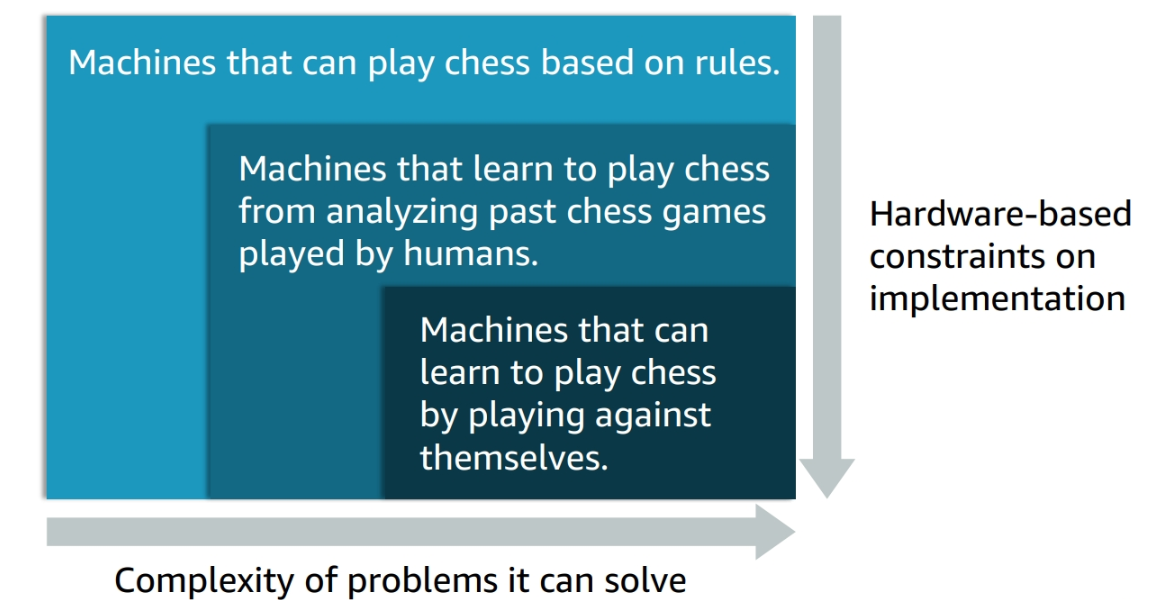
The figure demonstate going from AI to ML to Deep Learning
-
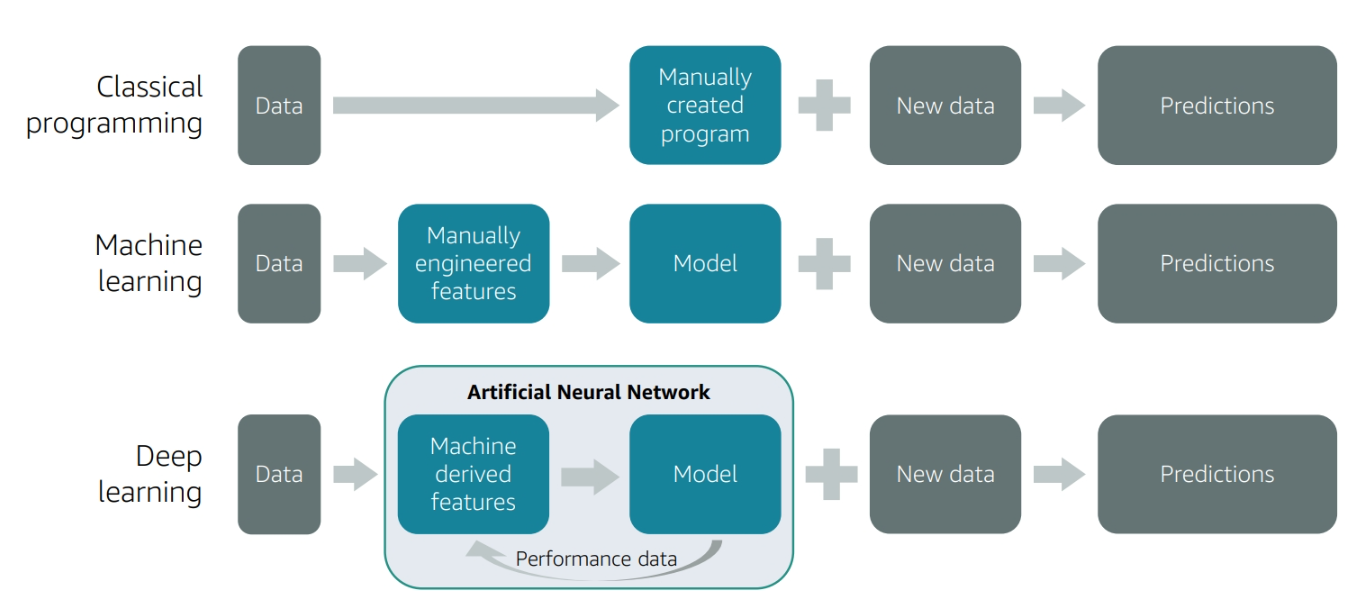
Deep Learning recap
- Deep learning models
- Learn using Artificial Neural Networks (ANN)
- Can be trained on raw features
- Include:
- A subset of ML methods
- Neurons arranged for computational efficiency
- Training networks with hundreds of layers that learn and improve the features
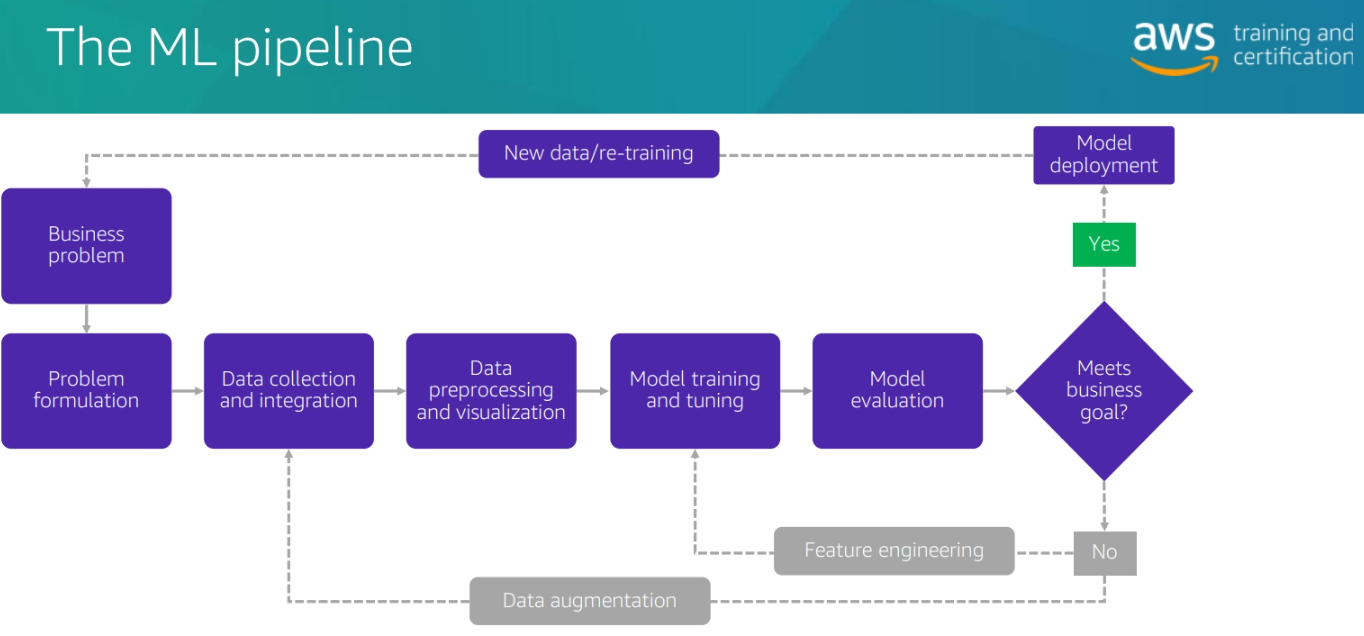
Machine Learning use cases
- Recommendation Systems: Predicting what a user will like
- Fraud Detection: Predicting whether a transaction is fraudulent
- Voice Recognition: Predicting what a user is saying.
- Image Recognition: Predicting what is in an image
The Pipeline of ML Problem for buy kindle
Bussines problem and Problem Formulation
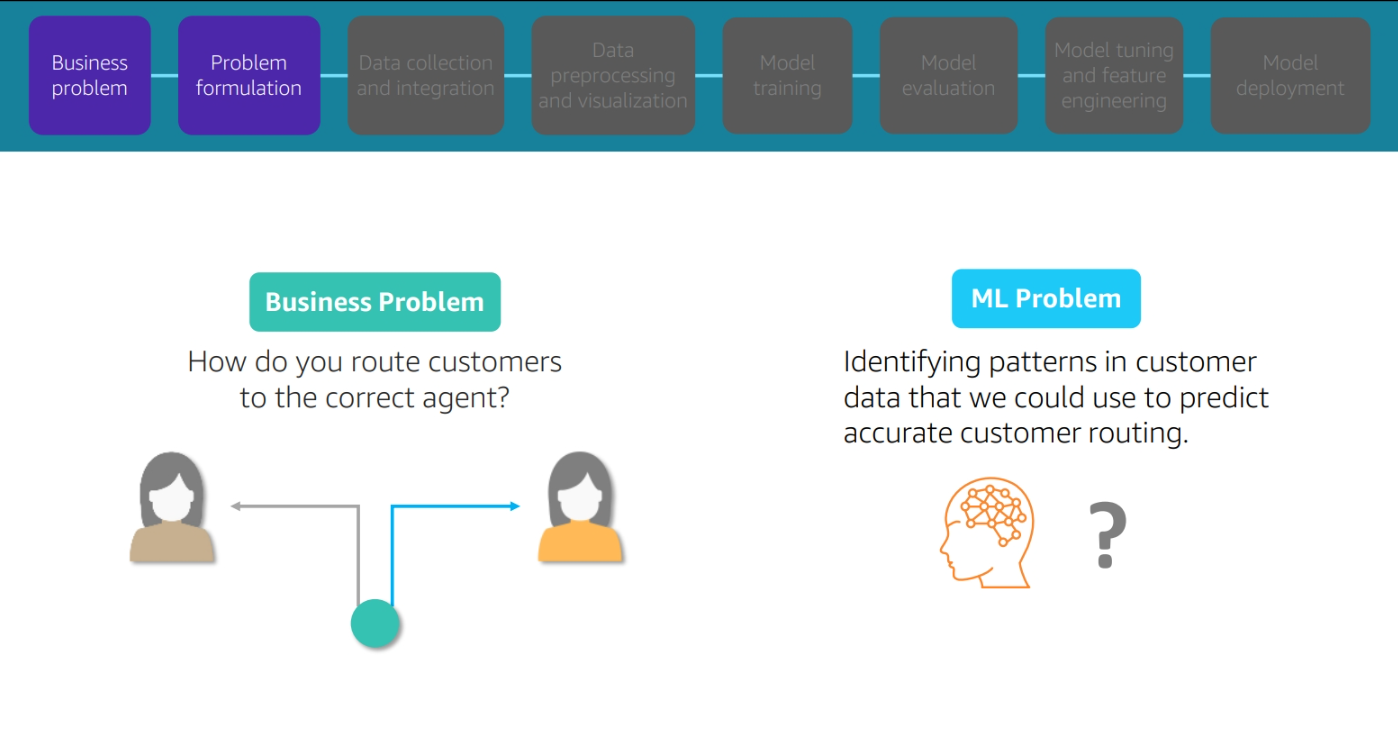
Data collection and integration
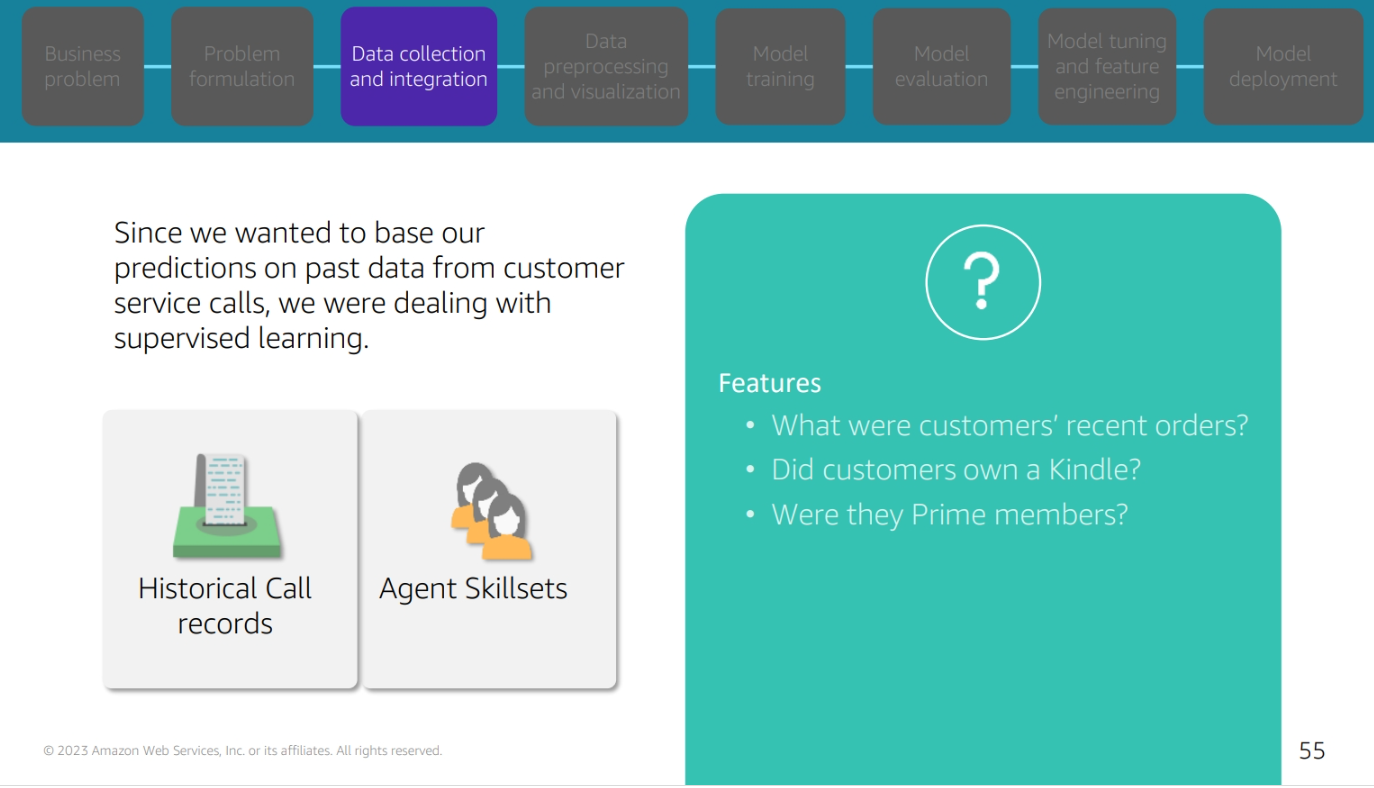
Data preprocessing and visulization
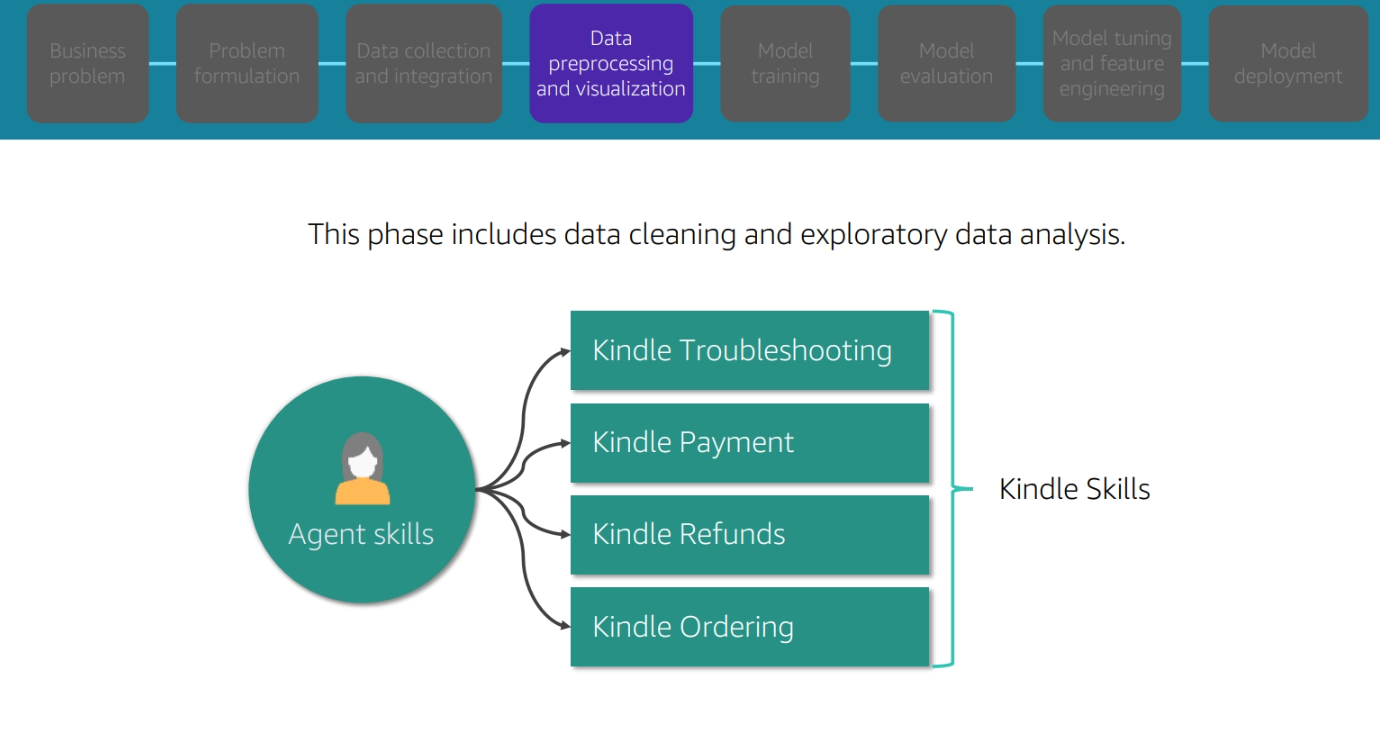
Data prepprocessing and visualization
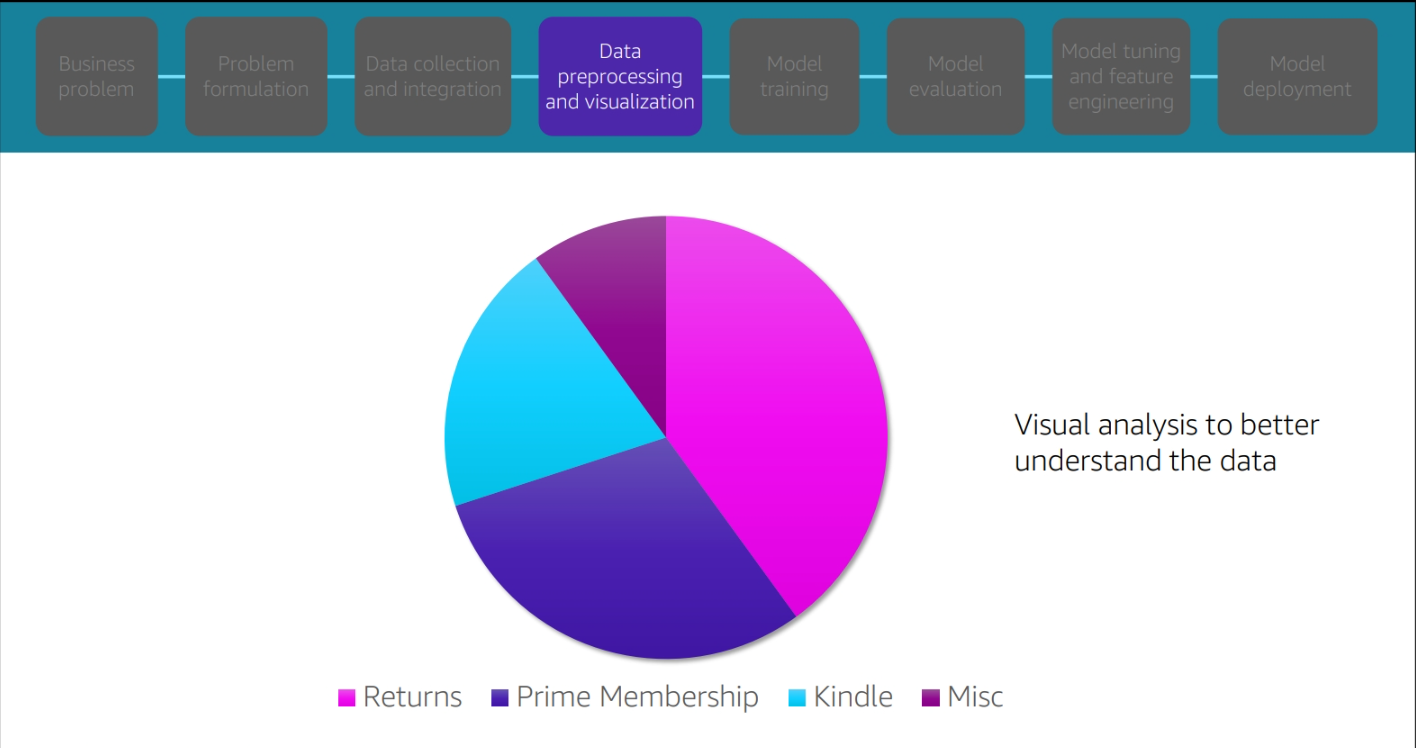
Model Training

Model tuning and feature enginnering

Model deployment
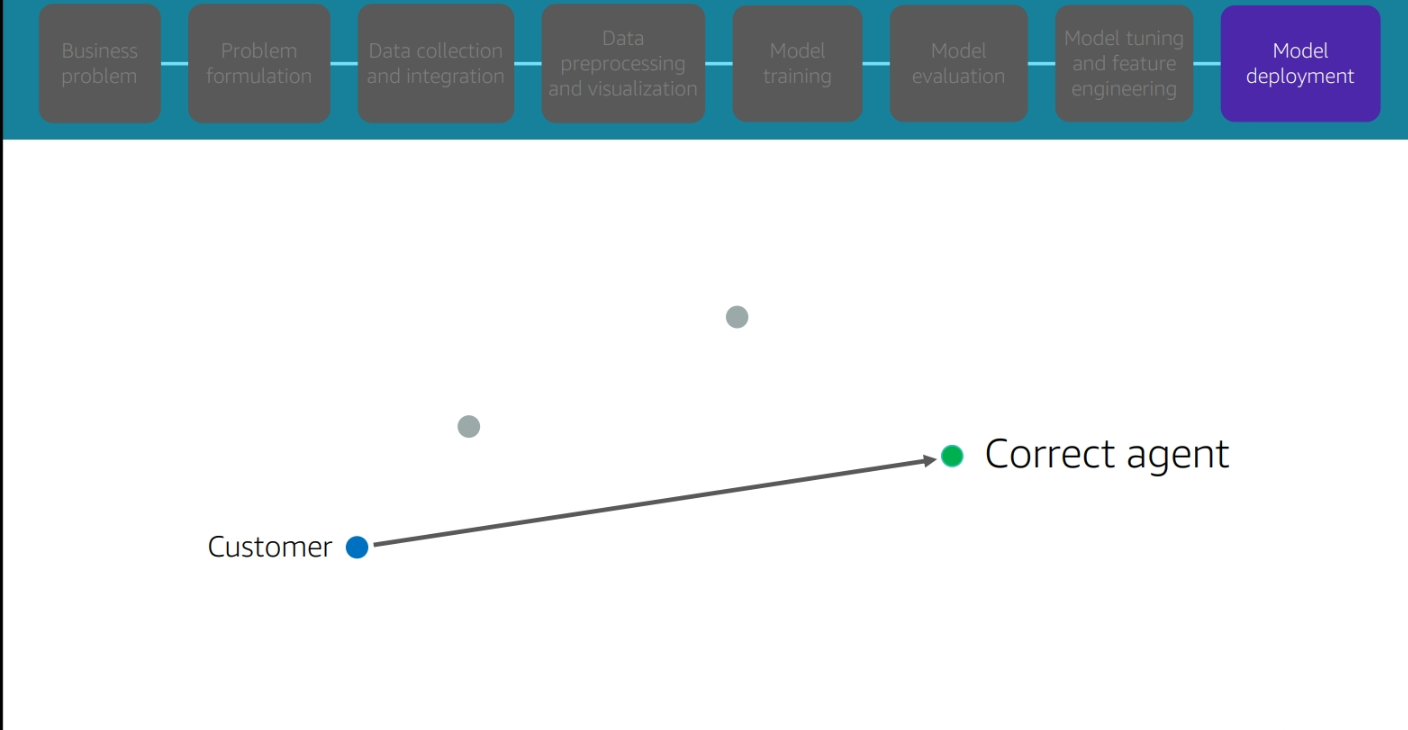
Module 2: AWS SageMaker
Amazon SageMaker is a fully-managed service used to build, train and deploy ML models at any scale. You can use part or all of Amazon SageMaker features.
Instances Types
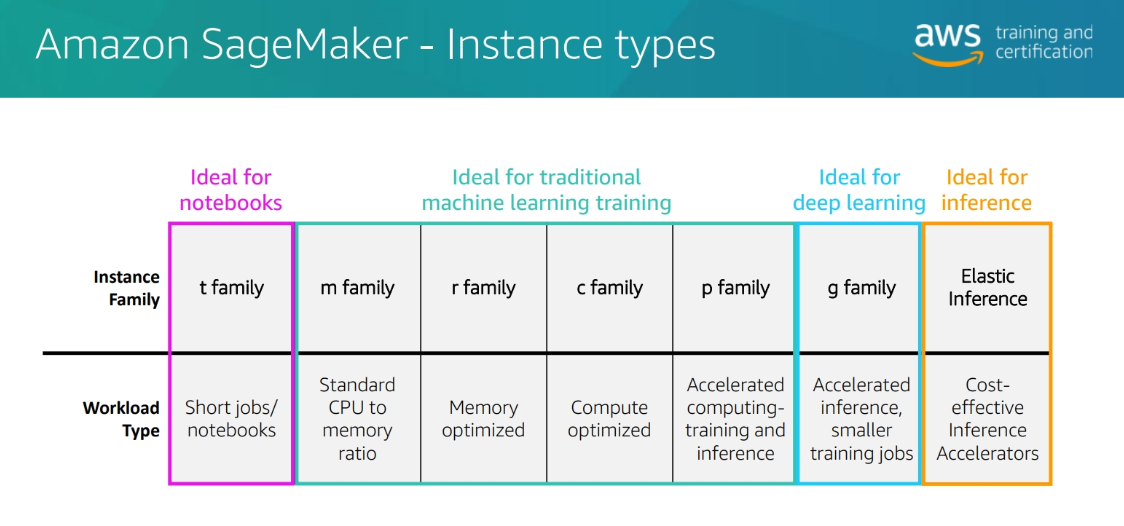
Algorithm options

SageMaker Deploytme
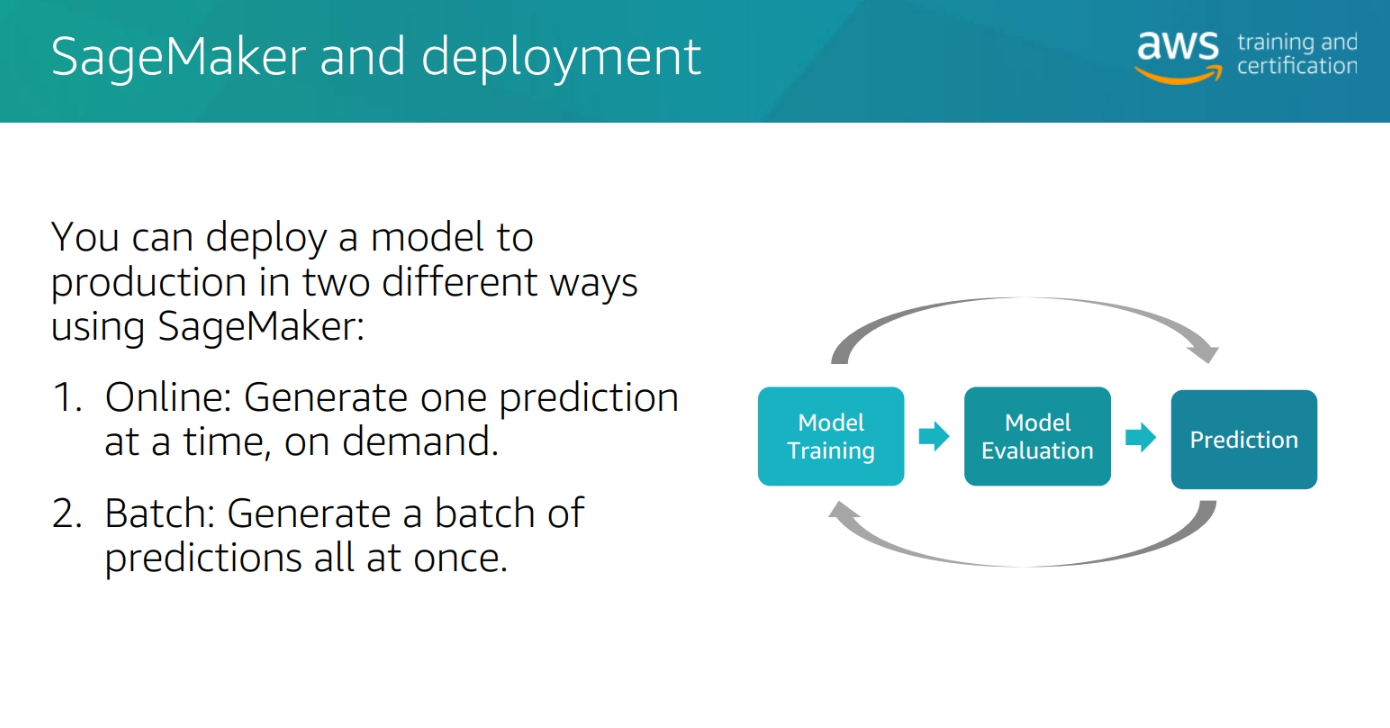
Module 3 : Problem Formulation
Problem Formulation
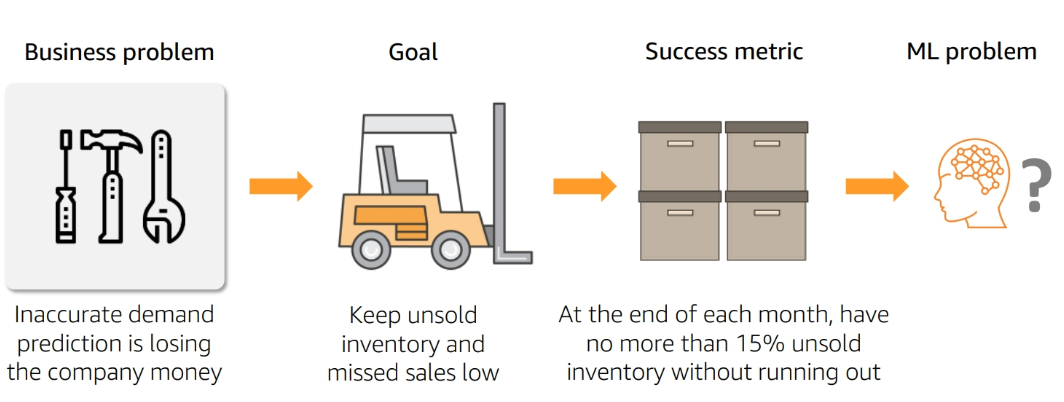
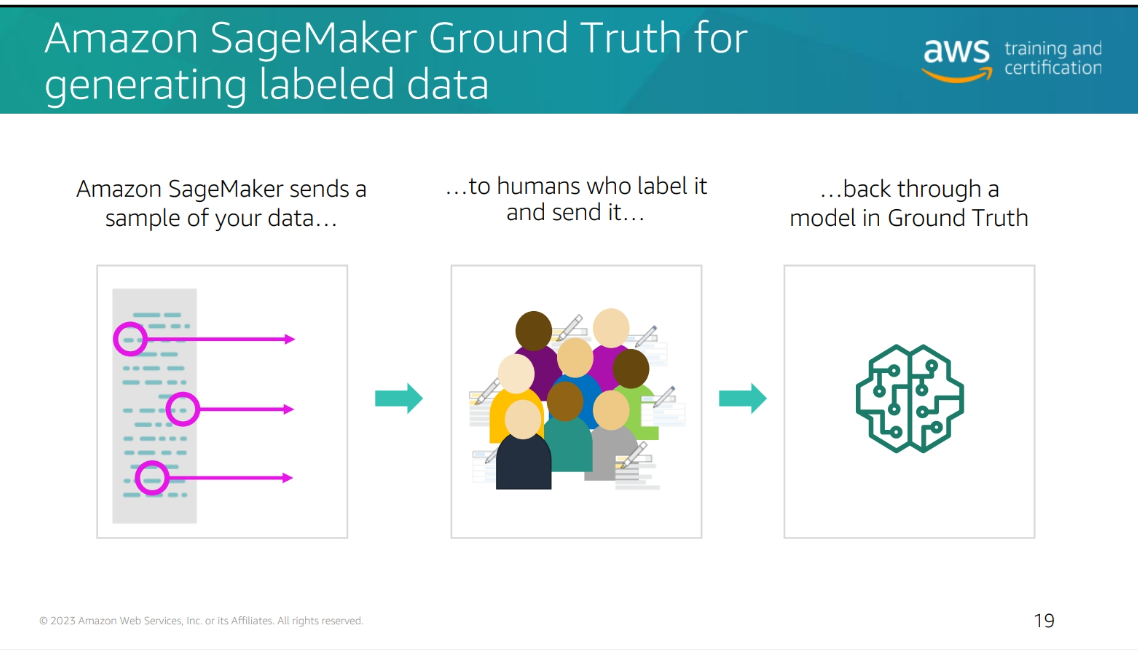
Define Success
-
Model Performance metrics:
- Example: The model should have an accuracy of 90% in predicting whether a customer will buy a Kindle
- Accuracy
- Precision
- Recall
- F1 score
- AUC
- Example: The model should have an accuracy of 90% in predicting whether a customer will buy a Kindle
-
Business Metrics:
- Example: The model should increase the number of Kindles sold by 10%
- Revenue
- Customer satisfaction
- Customer retention
- Customer acquisition
- Example: The model should increase the number of Kindles sold by 10%
Module 4: Data Preoprocessing
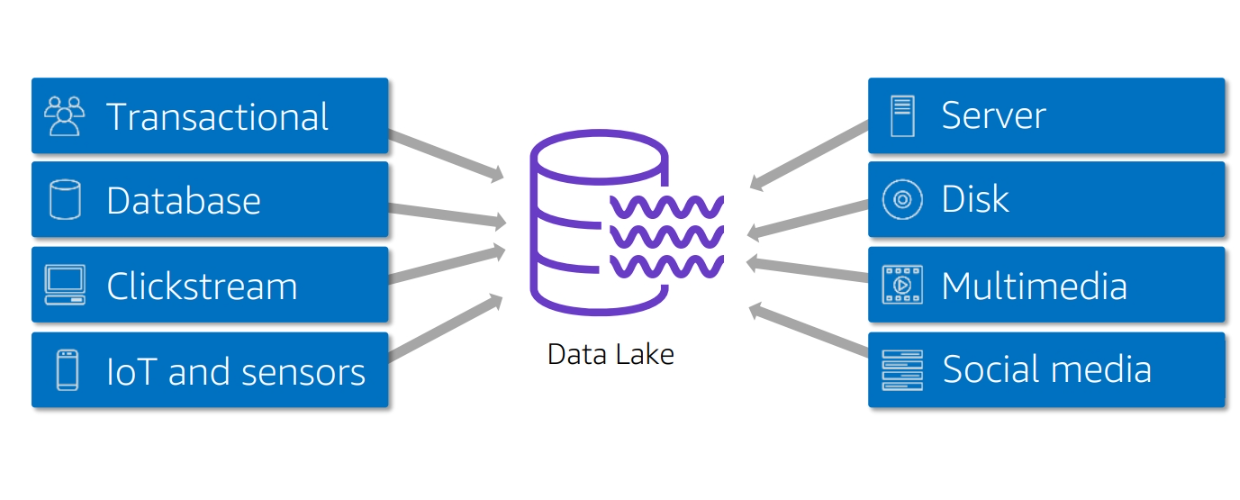

Python libraries for data preprocessing
- Pandas: Data manipulation and analysis which provides data structures and functions to manipulate numerical tables and time series data.
import pandas as pd
- Numpy: A library for the Python programming language, adding support for large, multi-dimensional arrays and matrices, along with a large collection of high-level mathematical functions to operate on these arrays.
import numpy as np
- Matplotlib: A plotting library for the Python programming language and its numerical mathematics extension NumPy.
import matplotlib.pyplot as plt
- Seaborn: A Python data visualization library based on matplotlib. It provides a high-level interface for drawing attractive and informative statistical graphics.
import seaborn as sns
Statistics for data preprocessing
- Mean: The average of the numbers
- Median: The middle number
- Mode: The number that appears most often
- Standard Deviation: A measure of the amount of variation or dispersion of a set of values
- Variance: A measure of the amount of variation or dispersion of a set of values
- Correlation: A measure of the strength and direction of the relationship between two variables
- Covariance: A measure of the relationship between two random variables
Dealing with outliers
-
Outliers: An observation that lies an abnormal distance from other values in a random sample from a population
-
Aritificial Outliers: Outliers that are created by errors in data collection or entry
-
Natural Outliers: Outliers that are part of the population
- ** Tranformation**: Logarithmic, square root, cube root, reciprocal, square, cube, exponential, and power transformations
- ** impute a value**: Replace the outlier with a value that is within the range of the data
-
Methods to detect outliers:
- Boxplot
- Z-score
- IQR score
- Scatter plot
- Histogram
- DBSCAN
- Isolation Forest
- Local Outlier Factor
- Elliptic Envelope
- One-Class SVM
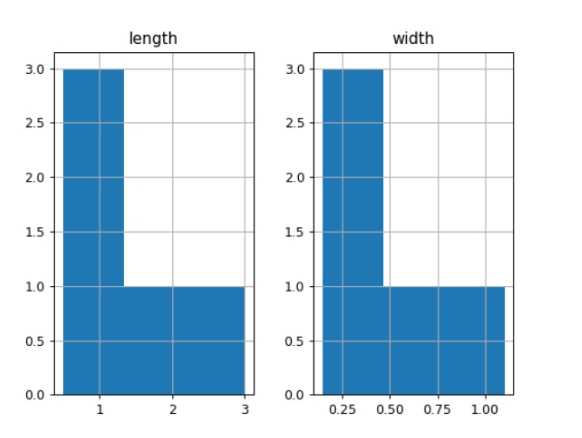


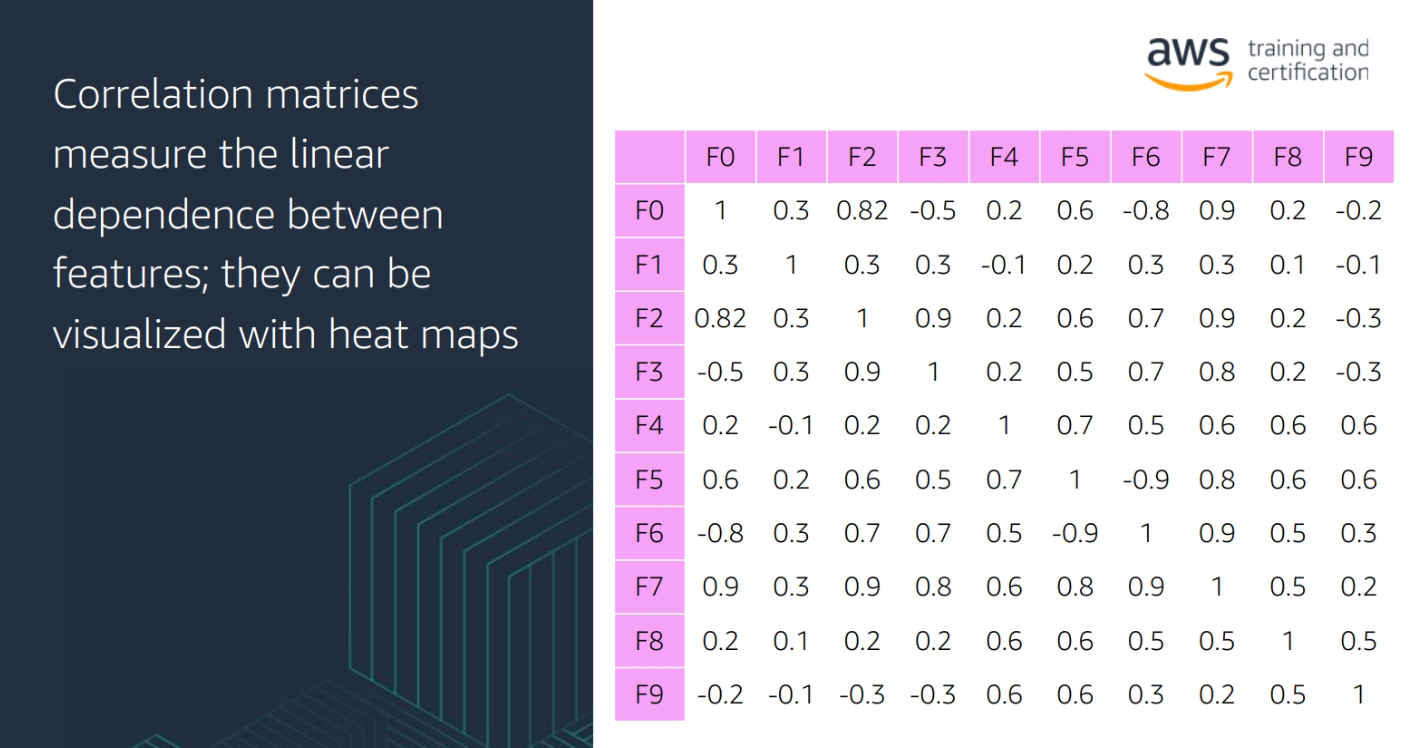

Module 5: Model Training
Overfitting and Underfitting and Balanced

-
Overfitting: The model is too complex and learns the training data too well
-
Underfitting: The model is too simple and does not learn the training data well
-
Balanced: The model learns the training data well and generalizes to new data
Bias and Variance
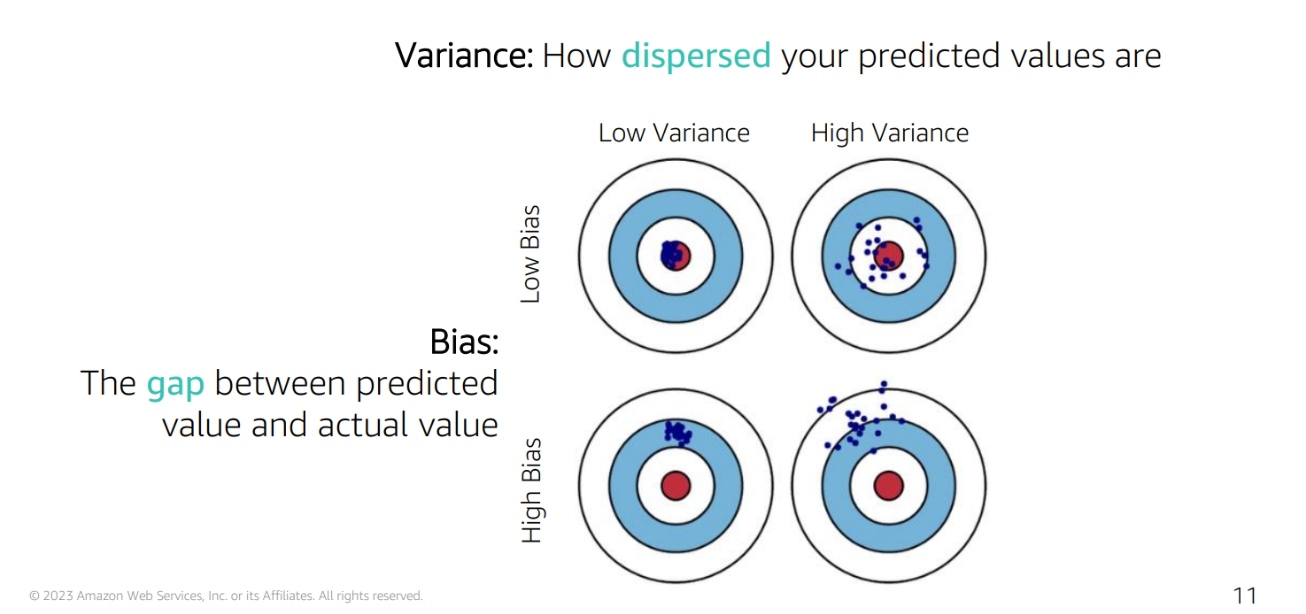
-
Bias: The error introduced by approximating a real-world problem, which may be extremely complicated, by a much simpler model
-
Variance: The error introduced by attempting to approximate a real-world problem by a much simpler model
Confusion Matrix
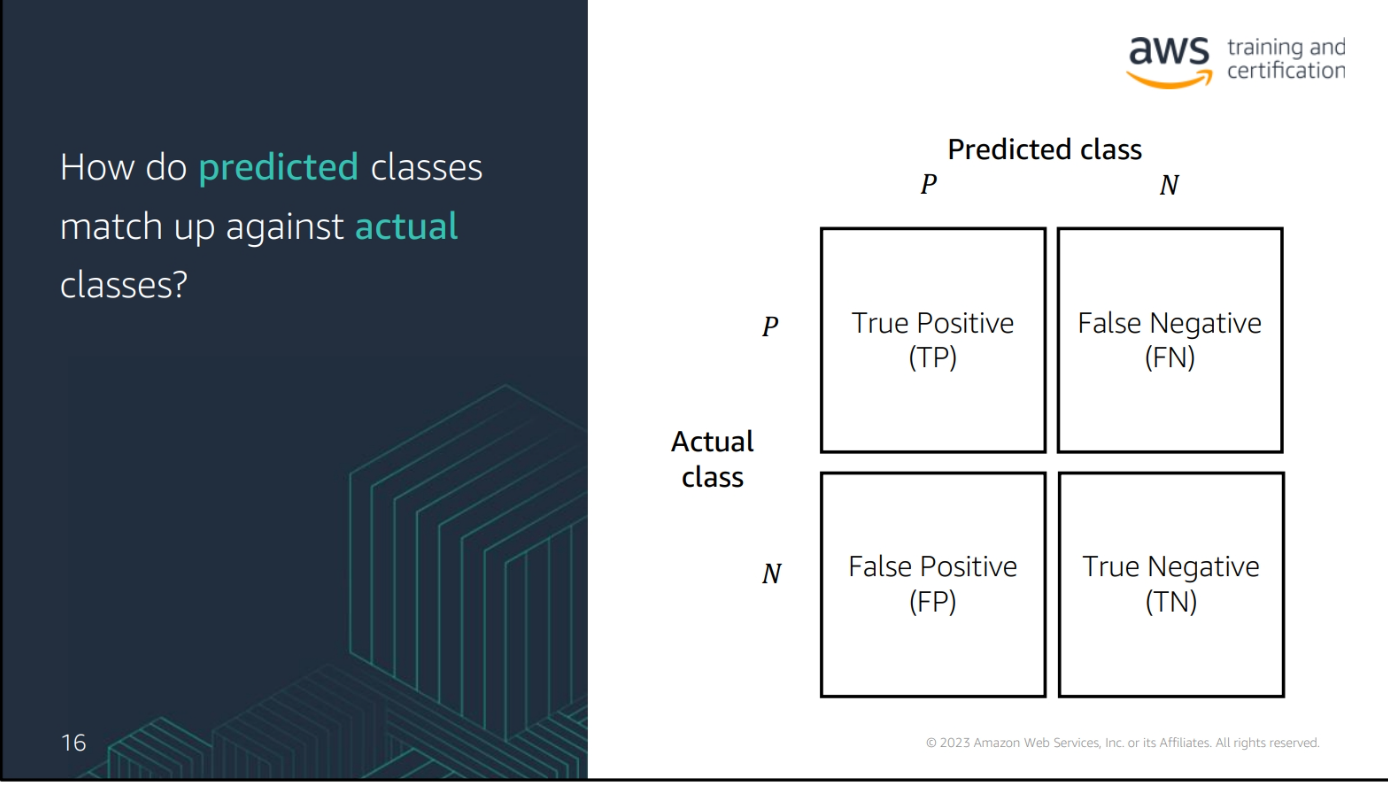
-
True Positive (TP): The number of positive cases that were correctly predicted
-
True Negative (TN): The number of negative cases that were correctly predicted
-
False Positive (FP): The number of negative cases that were incorrectly predicted as positive
-
False Negative (FN): The number of positive cases that were incorrectly predicted as negative
Precision, Recall, F1 Score, and AUC
- Precision: The number of true positive cases divided by the number of true positive and false positive cases
(TP / (TP + FP))
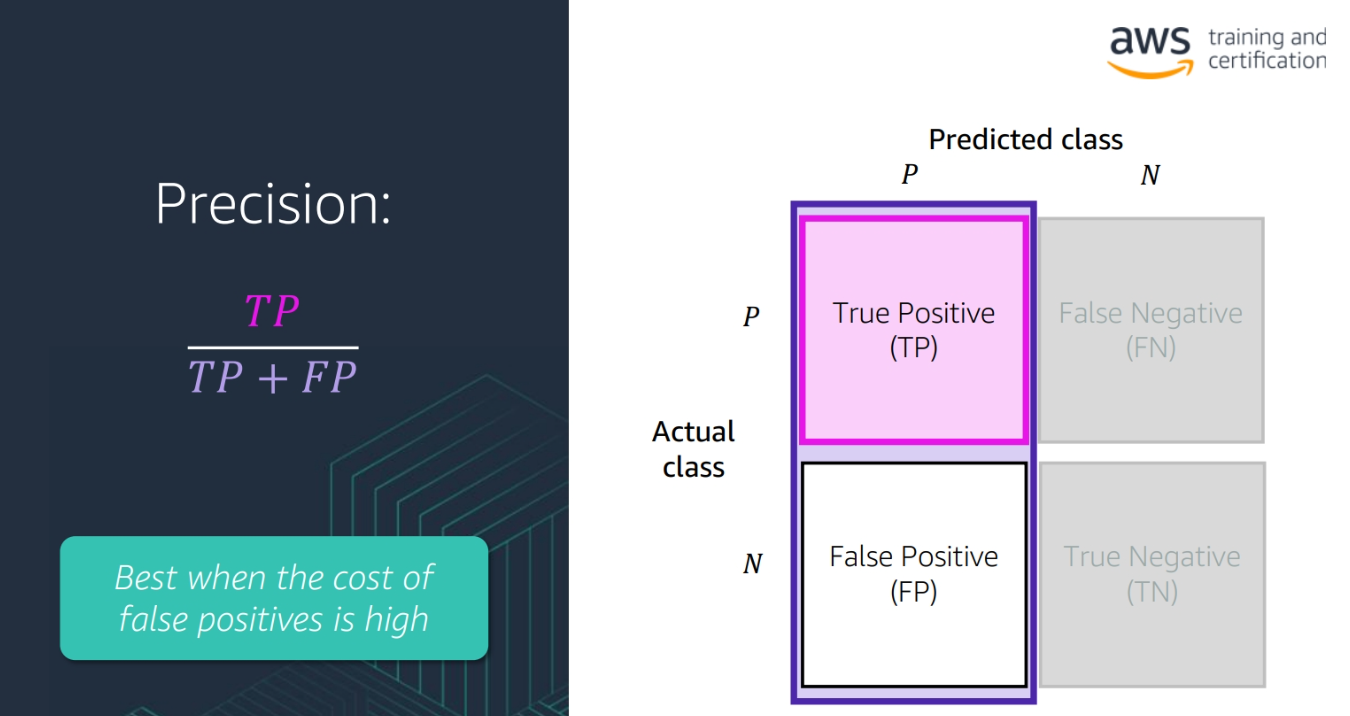
- Accuracy: The number of true positive and true negative cases divided by the total number of cases
(TP + TN) / (TP + TN + FP + FN)
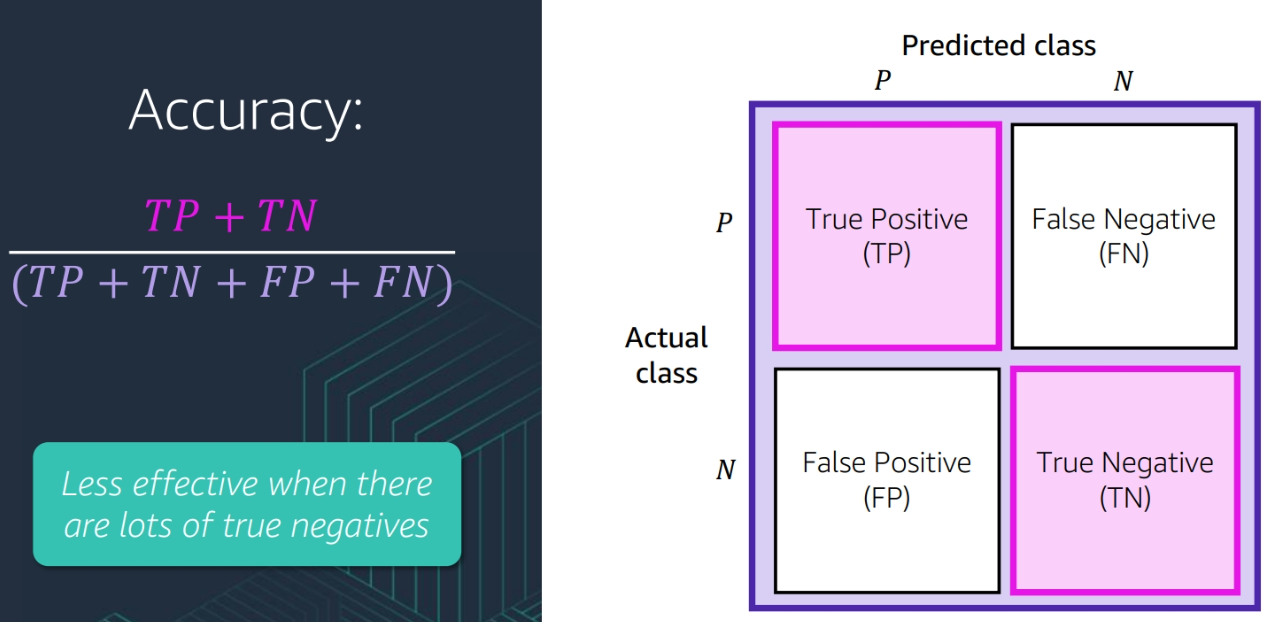
-
Recall: The number of true positive cases divided by the number of true positive and false negative cases
(TP / (TP + FN))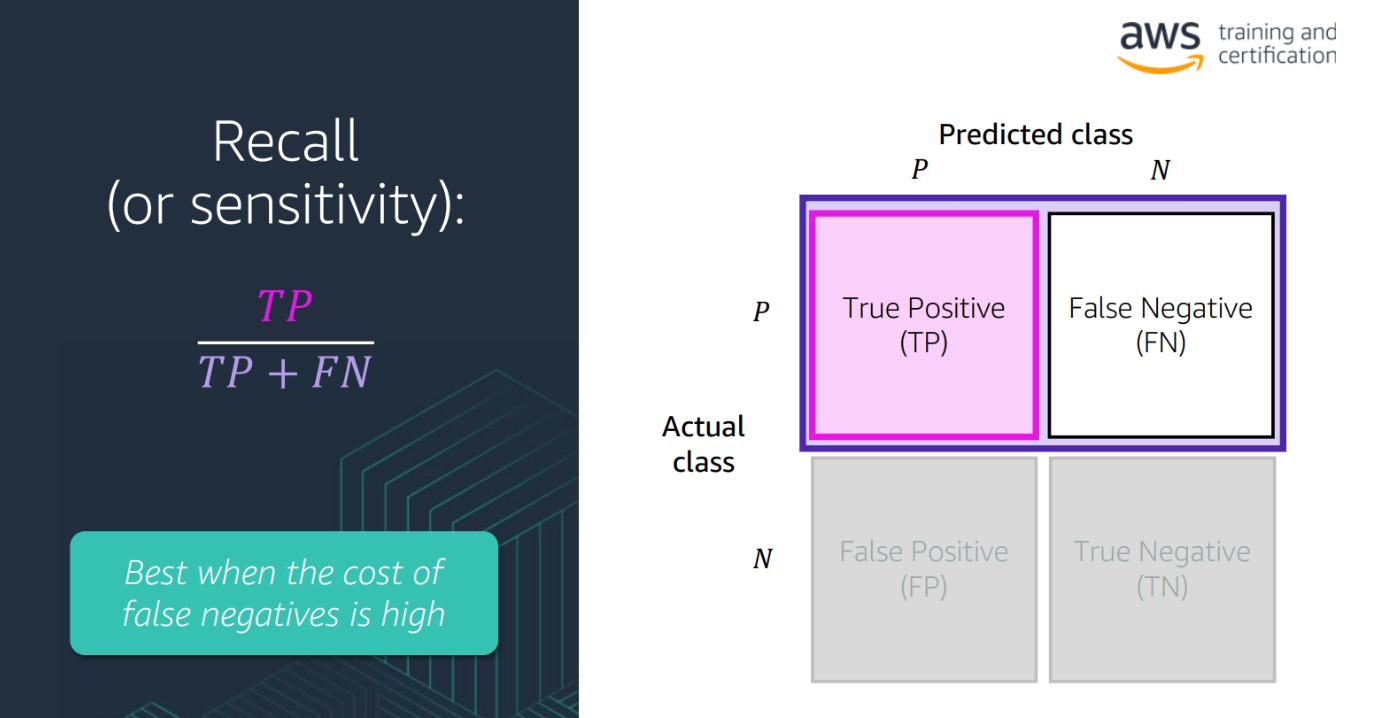
-
F1 Score: The harmonic mean of precision and recall
2 * (precision * recall) / (precision + recall) -
AUC: The area under the receiver operating characteristic curve, which is a plot of the true positive rate against the false positive rate
-
ROC Curve: A plot of the true positive rate against the false positive rate
-
AUC-ROC curve is a performance measurement for classification problem at various threshold settings. ROC is a probability curve and AUC represents degree or measure of separability. It tells how much model is capable of distinguishing between classes. Higher the AUC, better the model is at predicting 0s as 0s and 1s as 1s. By analogy, the Higher the AUC, the better the model is at distinguishing between patients with disease and no disease.
Types of Problems Score
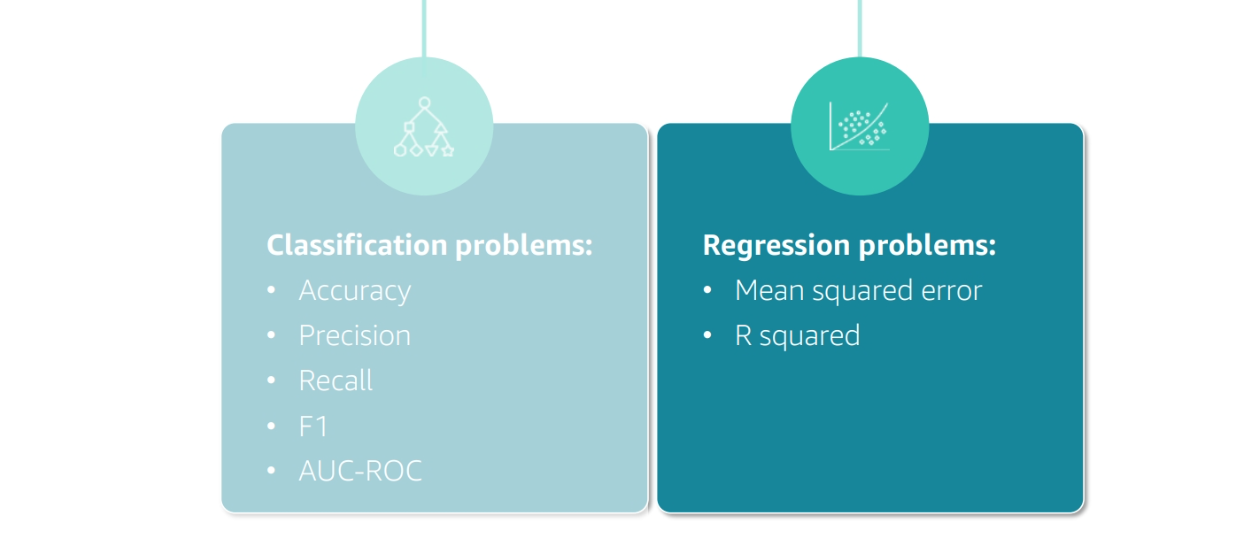
R2
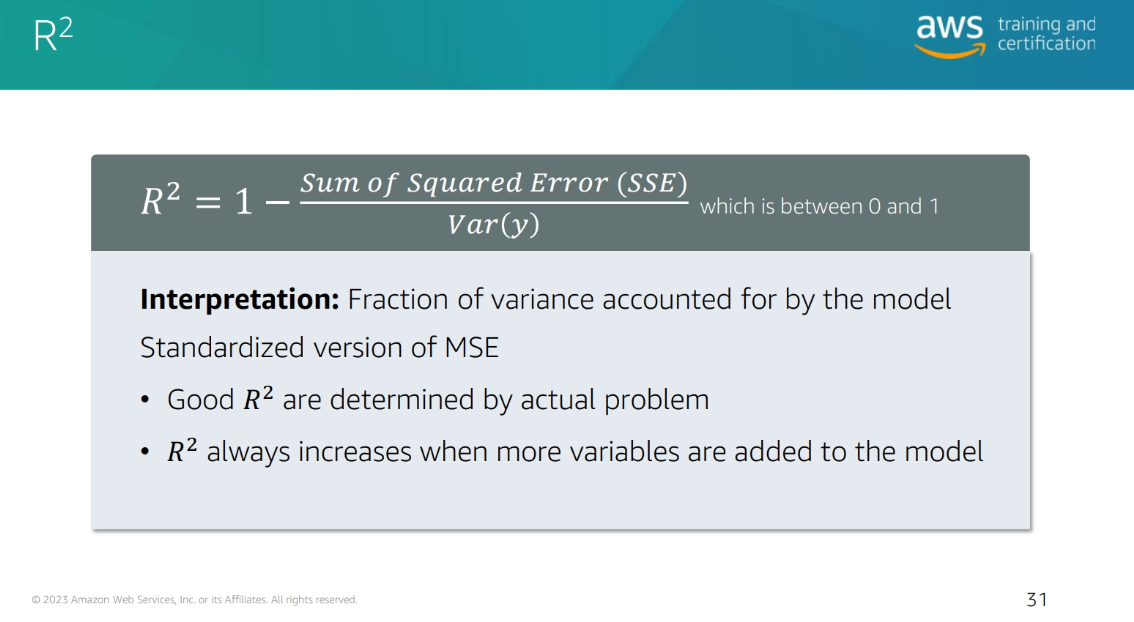
Module 7: Model Tuning and Feature Engineering
Feature Engineering components
-
Feature Selection: Selecting the most important features
-
Feature Extraction: Extracting new features from existing features
-
Feature Transformation: Transforming features to improve model performance
-
Feature Scaling: Scaling features to improve model performance

Techniques
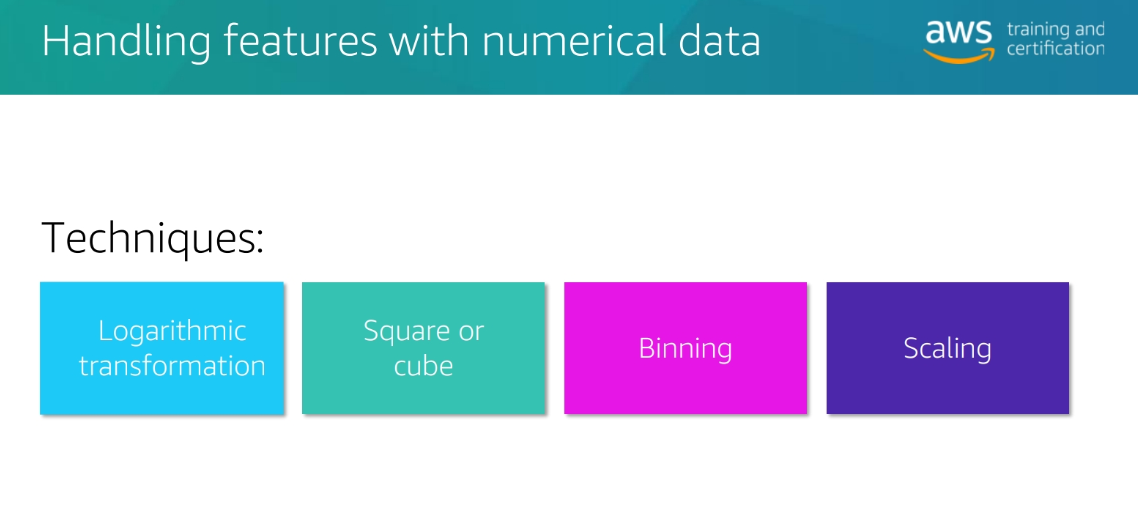
Why we choose feature engineering
-
Improve model performance: Feature engineering can improve the performance of a model
-
Reduce overfitting: Feature engineering can reduce overfitting by removing irrelevant features
-
Reduce underfitting: Feature engineering can reduce underfitting by adding relevant features
-
Improve interpretability: Feature engineering can improve the interpretability of a model by creating features that are easier to understand
Why change numerical to small number
-
Reduce computational cost: Smaller numbers require less memory and less computation
-
** Make the model more aware of the scale of the data**: The model will be more aware of the scale of the data and will be able to learn more effectively
Note : so the model think that the small number is more important than the large number
why change numerical to categorical
- make more sense to the model example: Age: 0-18, 19-30, 31-50, 51-70, 71-100 This will make more sense to the model than the original numerical data
Scaling transformation techniques
- Min-Max Scaling: Scales the data to a fixed range, usually 0 to 1
- Standardization: Scales the data to have a mean of 0 and a standard deviation of 1
- Max Abs Scaling: Scales the data to a fixed range, usually -1 to 1 or 0 to 1
- Normalization: Scales the data to have a magnitude of 1
one hot encoding
- One-Hot Encoding: A method of converting categorical data into a format that can be provided to ML algorithms to do a better job in prediction. It is a process of converting categorical data into a binary matrix format.
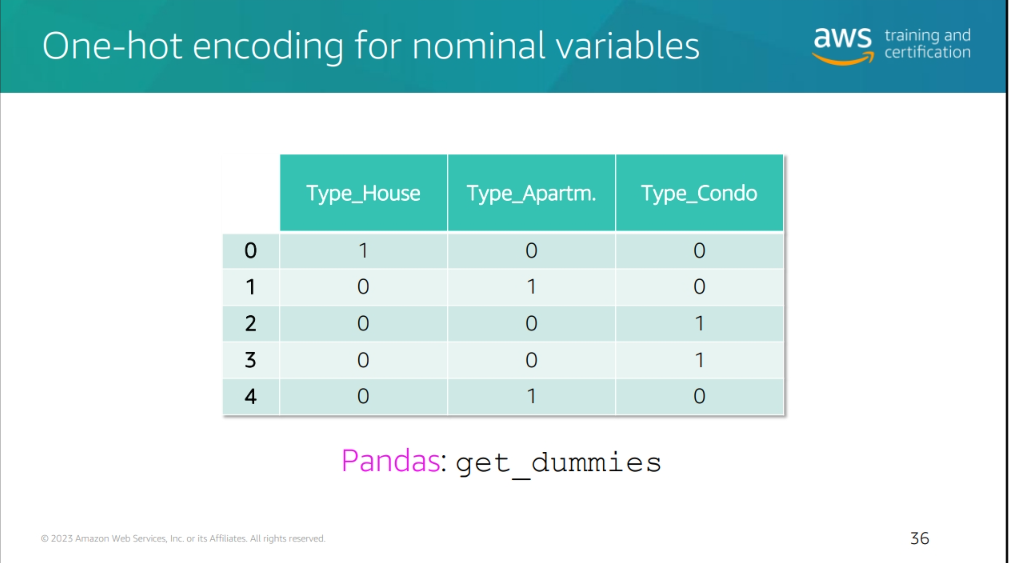
sometimes it's not efficient to do this so you could try
- **Group By somthing Similar
Hyperparameter Tuning
- Hyperparameters: Parameters that are set before the model is
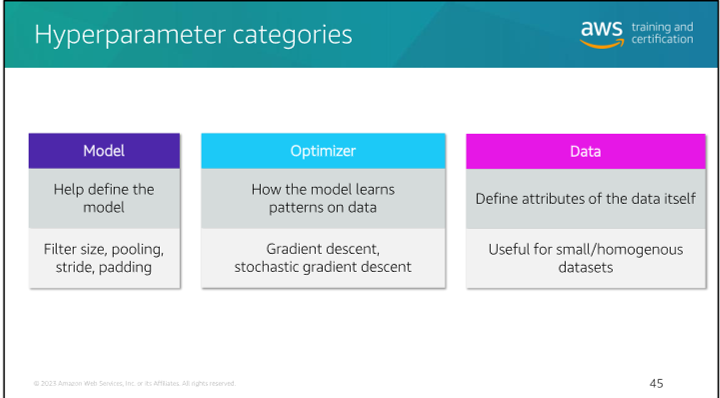
Hyperparameter Tuning seearch methods
-
Grid Search: A method of hyperparameter tuning that searches through a specified subset of hyperparameters
-
Random Search: A method of hyperparameter tuning that searches through a random subset of hyperparameters
-
Bayesian Optimization: A method of hyperparameter tuning that uses a probabilistic model to search through a subset of hyperparameters
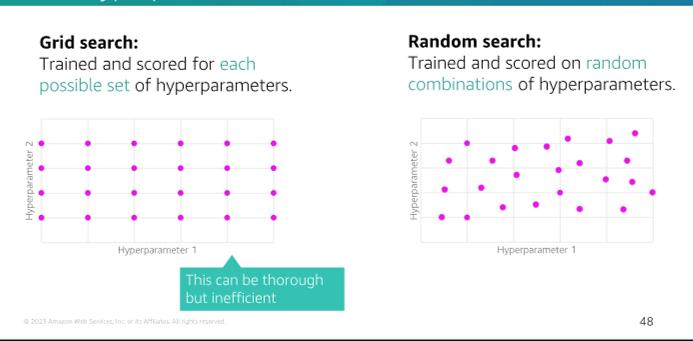
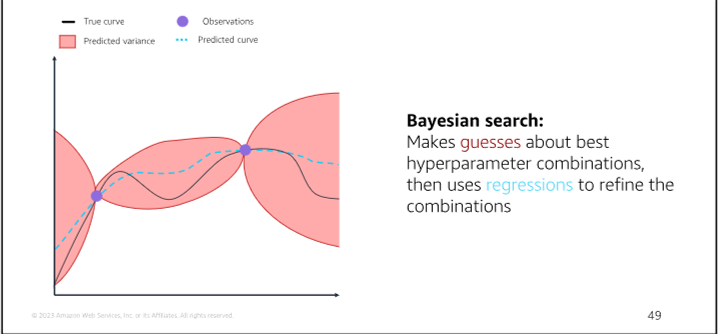
Model 8 Model Deployment
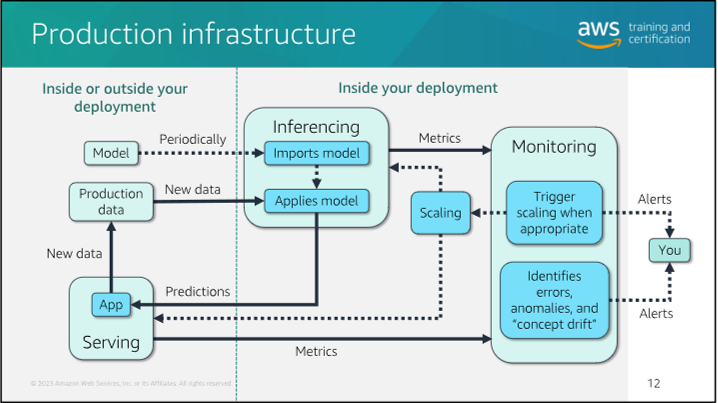
Types of inferences
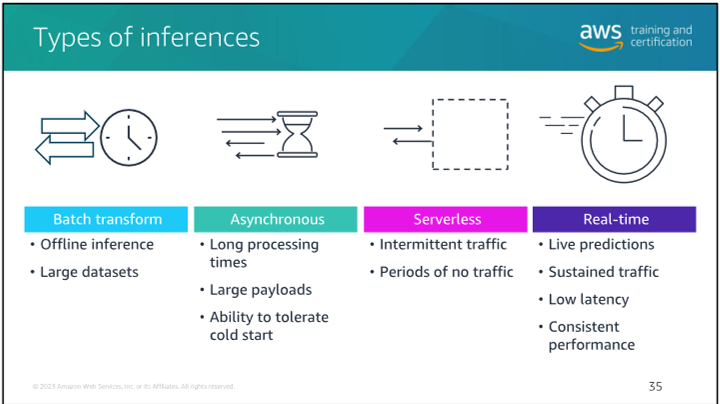
Inferecing vs. Training
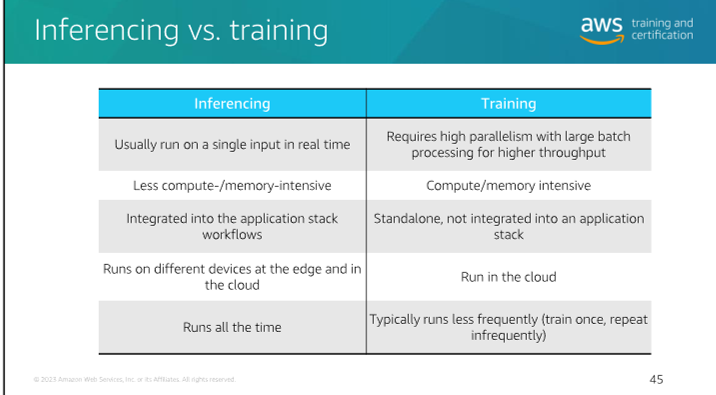
-
Blue-Green Deployment and Canary Deployment:
- Blue-Green Deployment:
- What is it? Blue-green deployment is a release management strategy used in software deployment. It involves maintaining two identical production environments: one called "Blue" (the active environment) and the other "Green" (the inactive environment).
- How does it work?
- Preparation: Set up a staging environment (Green) that mirrors the production environment (Blue).
- Deployment: Deploy the new version of your application to the inactive environment (Green).
- Testing: Thoroughly test the new version in the inactive environment to ensure stability.
- Switch: Once confident, switch users to the Green environment, making it the new active production environment.
- Goal: Minimize downtime and reduce risk during software updates.
- Canary Deployment:
- What is it? Canary deployment gradually rolls out new software versions to a controlled subset of users before deploying to everyone.
- How does it work?
- Incremental Rollout: Deploy the new version to a percentage of users (the "canaries").
- Monitoring: Monitor canaries' feedback and performance.
- Iterate: Address any issues that arise. If successful, proceed with a full-scale release.
- Goal: Identify and fix issues early, minimizing widespread problems or outages.
- Blue-Green Deployment:
-
Amazon SageMaker:
- What is it? Amazon SageMaker is a fully managed machine learning (ML) service provided by AWS.
- Features:
- Build, Train, and Deploy: Data scientists and developers can build, train, and deploy ML models in a production-ready hosted environment.
- UI Experience: SageMaker provides a user-friendly interface for ML workflows across multiple integrated development environments (IDEs).
- Managed ML Algorithms: Efficiently run ML algorithms against large data in a distributed environment.
- Flexible Training Options: Supports custom algorithms and frameworks.
- Secure and Scalable Deployment: Easily deploy models from the SageMaker console.
- Use Cases: SageMaker is ideal for various ML tasks, including image classification, natural language processing, and time series forecasting.
- Point Clouds and SageMaker:
- Amazon SageMaker Ground Truth simplifies labeling objects in 3D point clouds for ML training datasets.
- It supports sensor fusion of camera and LiDAR data, making it useful for applications like autonomous vehicles.